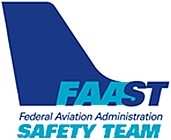Tue, Mar 22, 2011
Pilots Urged To Be Vigilant In Avoiding Low Structures
The NTSB has issued a "Safety Alert" to warn pilots about the
potential dangers posed by Meteorological Evaluation Towers (METs).
The towers are used to measure wind speed and direction during the
development of wind energy conversion facilities. METs are made
from galvanized tubing (or other galvanized structure) with a
diameter of 6 to 8 inches and are secured with guy wires that
connect at multiple heights on the MET and anchor on the
ground.

Many METs fall just below the 200-foot FAA threshold for
obstruction markings. They can also be erected quickly and without
notice to the local aviation community, depending upon their
location. Because of their size and color, pilots have reported
difficulty seeing METs from the air. Therefore, METs could
interfere with low-flying aircraft operations, including those
involving helicopter emergency medical services, law enforcement,
animal damage control, fish and wildlife, agriculture, and aerial
fire suppression.
The NTSB has investigated several fatal accidents involving
aircraft collisions with METs:
- On January 10, 2011, a Rockwell International S-2R, N4977X,
collided with a MET during an aerial application in Oakley,
California.
- On May 19, 2005, an Air Tractor AT-602, N9017Z, collided with a
MET that was erected 15 days before the accident in Ralls,
Texas.
- On December 15, 2003, an Erickson SHA Glasair, N434SW, collided
with a MET near Vansycle, Oregon.

MET Tower FAA Photo
While Wyoming and South Dakota have implemented requirements for
METs to improve the safety of low-flying aircraft, not all states
have such requirements for METs. (Wyoming maintains an online
database of METs and requires all METs to be registered and marked
so that they are visible from a distance of 2,000 feet. South
Dakota requires that METs be marked.)
The FAA has issued an NPRM (docket number FAA-2010-1326) to
update Advisory Circular (AC) 70/7460-1K to recommend the marking
of METs. However, the NTSB is concerned that the application of the
AC is voluntary, and, without mandatory application and marking
requirements for METs, many METs will still be constructed without
notice to the aviation community and will fail to be marked
appropriately.
The NTSB recommends that pilots operating low-flying
aircraft:
- Maintain vigilance for METs when conducting low-altitude
flights.
- If you locate a MET in your area, let other pilots know about
the location of the MET.
- Encourage the marking of METs in your area.

FAA Safety Team members are also exploring methods of notifying
pilots of the location and height of METs and are working to
educate MET owners, builders, and communities on the flight-safety
issues presented by METs.
More News
From 2023 (YouTube Version): Legacy of a Titan Robert (Bob) Anderson Hoover was a fighter pilot, test pilot, flight instructor, and air show superstar. More so, Bob Hoover was an i>[...]
Get The Latest in Aviation News NOW on Instagram Are you on Instagram yet? It's been around for a few years, quietly picking up traction mostly thanks to everybody's new obsession >[...]
Aero Linx: B-52H Stratofortress The B-52H Stratofortress is a long-range, heavy bomber that can perform a variety of missions. The bomber is capable of flying at high subsonic spee>[...]
Altimeter Setting The barometric pressure reading used to adjust a pressure altimeter for variations in existing atmospheric pressure or to the standard altimeter setting (29.92).>[...]
"Knowing that we play an active part in bettering people's lives is extremely rewarding. My team and I are very thankful for the opportunity to be here and to help in any way we ca>[...]
 Classic Aero-TV: Remembering Bob Hoover
Classic Aero-TV: Remembering Bob Hoover ANN FAQ: Follow Us On Instagram!
ANN FAQ: Follow Us On Instagram! ANN's Daily Aero-Linx (05.15.24)
ANN's Daily Aero-Linx (05.15.24) ANN's Daily Aero-Term (05.15.24):Altimeter Setting
ANN's Daily Aero-Term (05.15.24):Altimeter Setting Aero-News: Quote of the Day (05.16.24)
Aero-News: Quote of the Day (05.16.24)





